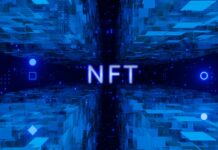“What exactly is a NFT?” is an increasingly asked question as NFTs continue to dominate the headlines in the art and collectibles world. Blockchain technology, developed in 1991, has made impressive strides and is most popularly known for its contribution to cryptocurrencies like Bitcoin and Ethereum.
But setting crypto aside, NFTs are another blockchain-based asset that is taking the world by storm. This article covers everything you need to know about NFTs. NFTs allow you to buy a unique digital token that proves your authority over a digital artwork. As a beginner, understanding the basics of NFTs may seem daunting.
However, NFTs are currently revolutionizing the digital art and collectibles world, and digital artists are seeing their lives change due to the massive sales to a new crypto audience. NFTs offer a great opportunity to invest in the digital art and collectibles world and benefit from its growth. This article covers everything you need to know about NFTs.
What Exactly is a NFT?
What does “NFT” stand for? A non-fungible token is a unique unit of data stored on a blockchain network that serves as a digital certificate of ownership and authenticity. NFTs have a distinct identification code that can’t be duplicated or replicated and a set of metadata that provides information about the item being represented.
This metadata can include information about digital assets, such as images, music, videos, and virtual assets, as well as physical items like cars, yachts, and more. Additionally, NFTs can also provide access to exclusive benefits, such as merchandise, event tickets, or other VIP experiences. This answers the question of many: what are NFTs?
The significance of NFTs lies in their ability to verify the ownership and authenticity of digital items using blockchain technology. Previously, there was no way to guarantee digital works’ origin and ownership history, but NFTs provide a solution to this problem.
By tying a unique asset to an NFT and linking it to a blockchain, NFTs provide a secure and permanent record of ownership and provenance. This information, which includes the history of ownership, the value of the asset, and other important details, can be easily accessed and verified by anyone on the network.
Creating and selling NFTs is a straightforward process that individuals or companies can easily manage. The first step is to identify the unique asset linked to the NFT, such as a piece of digital art, music, or other types of content.
The asset is then added to a blockchain network through a process known as “mining,” which creates the NFT. What does “NFT minted” mean? Minting an NFT or non-fungible token produces a unique digital asset on a blockchain that can be sold, bought, and traded.
This NFT becomes the digital representation of the asset and provides proof of ownership in a secure, immutable record on the blockchain.
The non-fungible token can be kept for personal use, or it can be bought, sold, and traded on NFT marketplaces and through auctions. The simplicity of this process makes non-fungible tokens an attractive option for creators, collectors, and investors looking to participate in the growing NFT economy.
What Exactly is an NFT in Terms of How it Works?
Non-fungible tokens are digital assets that exist on a blockchain network. What is a blockchain-based NFT? A blockchain is a decentralized, public ledger that records transactions and ensures the secure transfer of ownership.
Non-fungible tokens are unique in that each token is assigned a distinct identification code that distinguishes it from other tokens on the network. This allows for easy transfer of ownership and verification of ownership, an important feature of NFTs.
The market determines the value of NFTs based on supply and demand. They can be bought and sold in much the same way as physical assets, and they are used to represent both digital and physical assets alike.
This includes digital artwork, videos, music, and even real estate. Some users believe that tokenizing real-world assets makes buying, selling, and trading them more efficient and reduces the risk of fraud.
The unique identification codes associated with each NFT and the secure, decentralized ledger of the blockchain make it possible to track the history of the asset, increasing transparency and security in the trading of these valuable items.
The Different Types of NFTs
Non-fungible tokens have immense potential applications. Although we are still in the early stages of the NFT era, it may take some time before we see large-scale projects unrelated to art in some way.
At present, NFT projects typically fall into seven categories, including unique digital artworks, collectible items, in-game items, virtual real estate, creative merchandise, social media profiles, and photography.
PFPs and Avatars
When most people think of a non-fungible token outside the NFT sphere, they think of NFTs as profile pictures (PFPs) or avatars. The popularity of PFP NFTs on social media platforms like Twitter, Spotify, and Instagram is evidence of the NFT community’s desire for this type of non-fungible token.
These NFTs are free ads for non-fungible tokens, as users can display them on their social media profiles as a form of digital bragging rights. Celebrities and artists have also embraced PFNFTs, using them to showcase their personal brands and drive engagement from their fans.
One-of-one (1/1) Artwork
During the minting phase of NFTs, creators can split their work into multiple editions. These editions may appear identical to one another visually, but they have different edition numbers or token IDs stored on the blockchain.
This allows creators to increase the availability of their work, but some choose to go the opposite route by minting their work as a one-of-one NFT.
This approach gives the piece more value on the open market, as it is inherently more scarce and valuable. Artists such as Beeple, XCopy, and Pak have earned millions from their one-of-one NFTs, demonstrating the impact that NFTs can have on the value of digital goods.
Generative Art
Generative art is created by a computer, either through an algorithm or artificial intelligence (AI) or by physical robots, and this answers the question, “What is NFT art?.” NFTs have played a significant role in the growth and market boom of generative art, with projects like Art Blocks, Autoglyphs, and Braindrops pushing the boundaries of what is possible in the space.
Some projects use generative art to create NFT merchandise for writers, providing a solid entry point into the NFT world.
Collectibles
The recent growth of the sports trading card and memorabilia market has been replicated online through projects like NBA Top Shot. NFT collectibles are a viable format for NFT projects, especially those related to popular IPs.
Like their real-world counterparts, NFT collectibles can have varying levels of rarity and value, making them attractive to enthusiasts and collectors willing to pay a premium to complete their collections.
Photography NFTs
The popularity of photography NFTs is rising, and the trend is expected to continue in 2022 as more established photographers enter the NFT space.
Photographers such as Julie Pacino, Justin Aversano, and J.N. Silva have already succeeded with NFTs. As the segment grows, we can expect more creators to explore the uncharted creative territory that NFTs offer by incorporating photography with other creative disciplines.
Music NFTs
The music industry has struggled to provide artists with sustainable ways to make a living from their work, with streaming services taking the lion’s share of the revenue. Music NFTs offer a solution to this problem by providing a tokenized version of a piece of music, such as a song, album, or music video.
NFTs and blockchain technology allow artists to earn money while retaining creative control with platforms like Sound.xyz, Royal, and OneOf’s CO//SIGN programs
Gamified NFTs
Play-to-Earn (P2E) games, also known as crypto games, have become a popular application of non-fungible tokens (NFTs) in recent years. These games allow players to own unique in-game assets like skins, weapons, accessories, characters, and virtual land in the metaverse and trade them for financial rewards.
Some of the most popular P2E games in the NFT space include Axie Infinity, Gods Unchained, and Decentraland. However, not all non-fungible token projects that incorporate gaming elements fall into the play-to-earn category.
Some, such as Parallel, aim to gamify the NFT collecting experience, offering players a fun and engaging way to interact with NFTs and build their collections.
NFT Event Tickets
The use cases of non-fungible tokens have expanded in the Web3 ecosystem and are no longer limited to digital art and avatar NFTs. One example of this is the use of NFTs for event tickets.
NFT ticketing serves as a means of access for live and virtual events and provides issuers with a more secure and reliable record of attendance numbers. Additionally, non-fungible token ticketing can be used to send out notifications, offer special bonuses and promotions, and set up exclusive services for fans.
Membership Passes
NFT-based memberships are a growing and distinct aspect of the NFT space that works with PFPs (Proof of Future Performance) to give holders incentives and rewards.
These exclusive programs use NFTs as access keys to unlock various virtual and real-life experiences. Token-gating is often used to enforce these memberships, which uses blockchain technology to verify the ownership of the NFT and grant access to exclusive benefits.
Domain Names
Domain name NFTs have been a prominent aspect of the NFT ecosystem since its inception. Platforms like Ethereum Name Service and Unstoppable Domains have made it easier for users to purchase and manage domain names for their websites, wallets, NFTs, and other digital assets.
These domain names exist on the blockchain as tradeable NFTs, and some, like “beer.eth,” have sold for high prices on the secondary market. The popularity of domain name NFTs has continued to grow with the evolution of the NFT ecosystem, with the concept dating back to the launch of Linagee Name Registrar just a week after the Ethereum blockchain went live in 2015.
What is the Point of Buying NFT: Pros & Cons
NFTs, or non-fungible tokens, are unique digital assets that use blockchain technology to signify ownership. They are often compared to traditional assets, but it’s important to understand that NFTs are not an asset class in and of themselves.
When investing in NFTs, it’s crucial to focus on the underlying asset rather than just the tokenization. This means evaluating the value, risk, and potential for appreciation in the same way you would for any other investment.
Pros of Buying an NFT
The advantages of investing in NFTs are numerous and can allow investors to diversify their portfolios and gain exposure to blockchain technology.
Investing in NFTs is Accessible to Anyone:
Anyone can buy NFTs, making it a unique opportunity for anyone looking to participate in tokenized assets. One of the key advantages of investing in NFTs is the ease and efficiency of transferring ownership of the assets.
By using blockchain technology to signify ownership digitally, NFTs allow for ownership to be easily transferred between individuals anywhere in the world without the need for intermediaries or complex legal processes.
Owning an NFT is Secured by a Blockchain
The use of blockchain technology in NFTs not only makes the transfer of ownership more efficient and significantly improves the security of an investor’s ownership of the assets.
Blockchain technology creates a secure, decentralized ledger of all transactions, which makes it nearly impossible for ownership to be altered or stolen. Additionally, the transparency offered by blockchain technology provides investors with greater insight into their assets and ownership history.
Provides Unique Learning Opportunity
Investing in NFTs can also provide a unique learning opportunity for individuals interested in blockchain technology. By allocating a portion of their portfolios to tokenized assets, investors can gain first-hand experience with the technology and become more knowledgeable in the space.
This not only helps to diversify their portfolios but also provides the opportunity to participate in the growth of new and exciting technology potentially.
Cons of Buying an NFT
However, it’s also important to consider the potential risks and disadvantages of NFT investing. Despite growing popularity, NFTs are not yet widely recognized as an asset class. Their values can be highly volatile due to a lack of regulation, market speculation, and general misinformation.
NFTs are Not an Asset Class
Despite the advantages of investing in NFTs, it’s important to understand that NFTs are not an asset class. This common misconception is often driven by the hype and general misinformation surrounding NFTs.
As a result, tokenized asset values can be inflated and highly volatile, making investing in NFTs a riskier proposition.
NFT is Highly Energy-Intensive
Another potential drawback of NFTs is their energy-intensive nature. Most NFTs are supported by the Ethereum blockchain, which uses a proof-of-work operating protocol that requires significant energy to execute transactions. In fact, a single NFT transaction can consume as much electricity as the average household uses in nearly two days.
You Need to Own Ether (ETH)
Finally, it’s important to note that owning the blockchain’s native currency, Ether (ETH), is often necessary to participate in NFT sales.
With most NFT sales occurring on the Ethereum platform, individuals wishing to buy NFTs with fiat money like the U.S. dollar may have limited options. They will need to purchase ETH first to participate in the NFT market.
The Risks of NFTs
Non-fungible tokens (NFTs) are still in their infancy, and as a result, they present various challenges and risks within the cryptocurrency landscape. Some of these risks include:
Legal and Regulatory Challenges
Lack of recognized legal definition and regulation of NFTs globally. Currently, different countries are adopting various classification methods for NFTs, and there is a lack of a standard, universally accepted definition.
This highlights the need to create an international NFT organization that can establish clear rules and regulations for non-fungible tokens to be legally recognized and upheld worldwide. The rapidly growing NFT market highlights the urgency of finding a solution to the lack of legal definition and regulation of NFTs.
The NFT sector is constantly evolving, making it even more crucial for regulations to be flexible and adaptable to the changing technological advancements in NFTs.
Evaluation Challenges
The market’s biggest challenge is the difficulty in accurately determining the value of NFTs. The pricing of NFTs depends on various factors, such as their uniqueness, scarcity, ownership, and distribution channels.
With no set price for non-fungible tokens, the market experiences significant price fluctuations, making it challenging for buyers and sellers to assess the value of NFTs. The unpredictable nature of the factors affecting NFT prices also creates an added risk for potential buyers and investors.
Intellectual Property Rights
ensuring the authenticity of non-fungible token ownership. When purchasing an NFT, it is crucial to verify that the seller is indeed the rightful owner of the NFT. There have been instances of fake non-fungible tokens being created or pictures of existing NFTs being taken, leading to the proliferation of fraudulent non-fungible tokens in the market.
Buyers of NFTs only acquire the right to use the NFT and do not have any intellectual property rights over the NFT. This information is usually recorded in the smart contract’s underlying metadata, which serves as proof of ownership.
Cyber Security and Fraud Risks
Cybersecurity and fraud risks are associated with NFTs. As the digital world continues to expand, the popularity of NFTs has also grown, increasing the likelihood of cyberattacks and fraud.
Some risks include imitations of legitimate non-fungible token stores, selling fake NFTs by individuals posing as famous NFT artists, and theft of well-known NFTs. These risks are further amplified by the prevalence of false airdrops, fake NFT freebies, and copyright theft, making it important for individuals to exercise caution when dealing with non-fungible tokens.
Smart Contract Risks and NFT Maintenance
Vulnerability of NFTs to smart contract and maintenance risks The NFT market is vulnerable to smart contract and maintenance risks, which can result in large-scale theft and financial losses. Hackers can target decentralized finance networks in various ways, leading to significant amounts of cryptocurrency loss.
It is essential for individuals to be aware of these risks and take the necessary precautions to mitigate them, such as thoroughly researching the NFTs they wish to purchase and using secure storage options for their NFTs.
Consideration of NFTs as Securities
Securities regulators hold power to categorize any digital asset, including non-fungible tokens (NFTs), as security. This raises important questions about the legal ramifications of buying and selling NFTs, as potential buyers may be subject to securities laws.
The expanding non-fungible token industry is providing a valuable learning opportunity for the legal and fintech industries. As NFTs are increasingly linked and integrated into virtual worlds, particularly the metaverse, it is becoming more likely to be used for commerce and therefore falls under these security regulations.
AML and CFT Challenges
Anti-Money Laundering (AML) compliance has become a significant challenge for banks and other financial institutions due to the inadequacy of current mitigating methods.
The International Monetary Fund (IMF) is especially concerned about the potential impacts of money laundering and terrorism financing on its member countries, as these pose a threat to the stability of financial institutions and systems, increase the volatility of global capital flows, and decrease foreign direct investment.
Money launderers and terrorist financiers take advantage of gaps in national AML/CFT systems and disparities between countries to move their money to or through countries with weak legal and institutional frameworks. This issue is not limited to the global NFT sector and is a concern for the entire financial industry worldwide.
Popular NFT Marketplaces to Know
As the NFT art world continues to evolve, several platforms are making a big impact. For those who are eager to start exploring this exciting new world, here is an overview of some of the most popular NFT art marketplaces:
OpenSea
As the world’s first and largest NFT marketplace, OpenSea NFT has quickly established itself as a major player in the industry. They achieved a major milestone in August 2021 when their trading volume reached $1 billion, solidifying their position as a leader in the field.
SuperRare
This highly curated platform specializes in 1-of-1 edition NFTs, making it the “gold standard” in the NFT space. The platform’s commitment to quality and exclusivity has earned it a reputation as a destination for the most discerning non-fungible token collectors.
NiftyGateway
This fast-growing NFT marketplace is leading the pack in sales volume and is known for its popular daily non-fungible token drops featuring top visual artists and celebrities’ work.
One of the few platforms to accept a USD or credit card as payment, NiftyGateway is a convenient option for those looking to get involved in the NFT market.
Zora
This feed-style NFT site operates differently from other marketplaces, as the market for each piece is baked into the NFT itself rather than being run by the platform. This means that Zora does not charge a transaction fee on each sale, making it an attractive option for NFT creators.
The Zora protocol is also open for anyone to build on, making it an accessible and inclusive platform for the NFT community.
Foundation
This beautifully designed and curated NFT marketplace features reserved bidding and 24-hour auctions, creating a unique buying experience for non-fungible token collectors. With a focus on quality and accessibility, the Foundation is open to everyone to create NFTs.
Rarible
As the most open and permissionless non-fungible token marketplace, Rarible allows anyone to create an NFT right away without the need for an invitation. The platform has a roadmap to eventually become community-run, making it a truly democratic and inclusive platform for the NFT community.
Makersplace
As an invite-only creator platform, Makersplace accepts both Ethereum and fiat currency and is known for its commitment to quality and exclusivity. Recently partnering with Christie’s auction house, Makersplace has already made a big impact in the NFT world, selling the first fully digital piece at Christie’s by artist Beeple.
Why Own NFTs?
You might wonder: what is the purpose of NFT? The rise of non-fungible tokens has generated much interest but also sparked some skepticism among those unfamiliar with the concept.
Some may question the value of owning a digital asset, what makes NFTs valuable, or the authenticity of “proof of ownership” in the digital realm. However, there are several compelling reasons why people choose to own NFTs.
NFT Empowers Artists
One of the main draws of NFTs is the ability for artists to have more control over their work. Historically, creators have faced a difficult choice when dealing with publishers, producers, and auction houses: accept the terms offered or go without the exposure and financial benefits of working with these institutions.
With NFTs, artists can sell their work directly to buyers, retain the IP, and earn royalties from subsequent sales. This is seen as a way to break down the gatekeepers in the creative industries and support artists more fairly. Many NFT collectors are motivated to empower the artists they admire.
Collectibility
Another reason why people buy non-fungible tokens is that they offer a new type of digital collectible. Similar to traditional collectibles, such as rare sports cards or antique items, NFTs offer a chance to own something that is rare and has cultural relevance. The fact that there can only be one owner of a specific NFT adds to its uniqueness and potential value.
Investment
The potential for financial gain drives some NFT collectors’ purchases. Much like investing in traditional art, there is a hope that the value of an NFT will appreciate over time. This has already been proven to be the case, with some non-fungible tokens selling for millions of dollars.
For instance, the NFT of an artwork by American digital artist Beeple sold for $69 million at a Christie’s auction in March 2021. However, it’s important to note that investing in non-fungible tokens is a high-risk endeavor, and market volatility can result in significant losses.
Community
Owning a non-fungible token can also bring social benefits, as many NFT projects build communities around their work. For example, the Bored Ape Yacht Club has created a members-only discord, merchandise, virtual meetups, and more.
For many non-fungible token collectors, being a part of this community is an important part of the NFT experience. They see their owners as a matter of identity and social connection.
How Do You Buy NFTs?
The NFT market can be a tempting opportunity for those looking to invest; however, it is important to proceed with caution and ask yourself first how to invest in NFTs.
The market is volatile, leading to significant losses for inexperienced or unprepared investors. Before entering the NFT market, it is crucial to have a solid understanding of the buying process.
Open a Crypto Exchange Account
The first step to investing in NFTs is opening a crypto account on a reliable platform or exchange. This will allow you to buy and sell different types of cryptocurrencies, including NFTs. It is crucial to research different platforms and compare their features, fees, and support services to find the one that best suits your needs.
Open a Crypto Wallet
To store and access your NFTs, you will need a crypto wallet. This wallet will hold the keys that grant access to your digital assets, and you will be given a unique seed phrase—also known as a recovery phrase—to access them. It is extremely important to keep your seed phrase safe, as losing access to it will also result in losing access to your wallet.
There are two types of crypto wallets: those hosted by exchanges and those that operate independently. If you choose to use a wallet hosted by an exchange, the exchange will act as an intermediary for crypto transfers and hold your private keys, ensuring the safety of your assets.
However, if you want to buy and sell NFTs without the involvement of a third party, you will need a wallet connected directly to the blockchain. This will allow you to transfer currency directly to others using your public key.
Transfer Ethereum Into a Crypto Wallet
Once you have selected a crypto platform, bought ETH, and transferred it to your wallet, you can start buying NFTs. The process of transferring ETH to your wallet will vary based on the exchange, wallet, and marketplace you use.
Buy NFTs
When you buy a non-fungible token, you become the owner of the digital asset, meaning it becomes your property. However, it is important to keep in mind that ownership of an NFT does not necessarily come with the rights to adapt or reproduce the work unless such rights are part of the agreement between the buyer and the creator.
Different marketplaces may also impose different restrictions on the NFTs you purchase, so it is crucial to understand the terms and conditions before making a purchase.
Exploring NFTs: What Exactly is an NFT and How to Navigate the Digital Frontier
NFTs have disrupted the digital world and redefined the concepts of ownership and authenticity.
However, like any new technology, NFTs also come with risks, including volatility and market fluctuations, intellectual property rights, and environmental impact. As non-fungible tokens continue to evolve, it will be interesting to see how they shape the future of ownership and authenticity in the digital world.
As unique digital assets, NFTs offer many benefits, including digital scarcity, immutable proof of ownership, and the potential for use in various industries. Whether you’re looking to invest, create, or simply learn more about NFTs, this beginner’s guide is a great starting point.

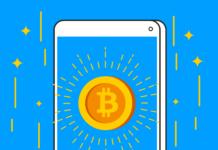
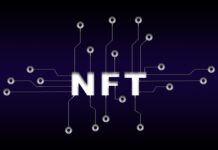
![[2023] 11 Top NFT Games of the Year: A Must-Play List top nft games](https://keystone.finance/wp-content/uploads/2023/01/top-nft-games-218x150.jpg)

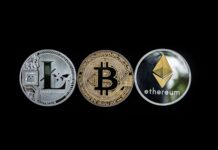
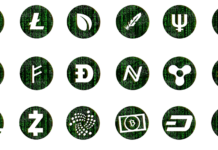
![[2023] How to Buy NFT on Coinbase: Simple and Easily Purchase buy nft on coinbase](https://keystone.finance/wp-content/uploads/2023/02/buy-nft-on-coinbase-218x150.jpg)
